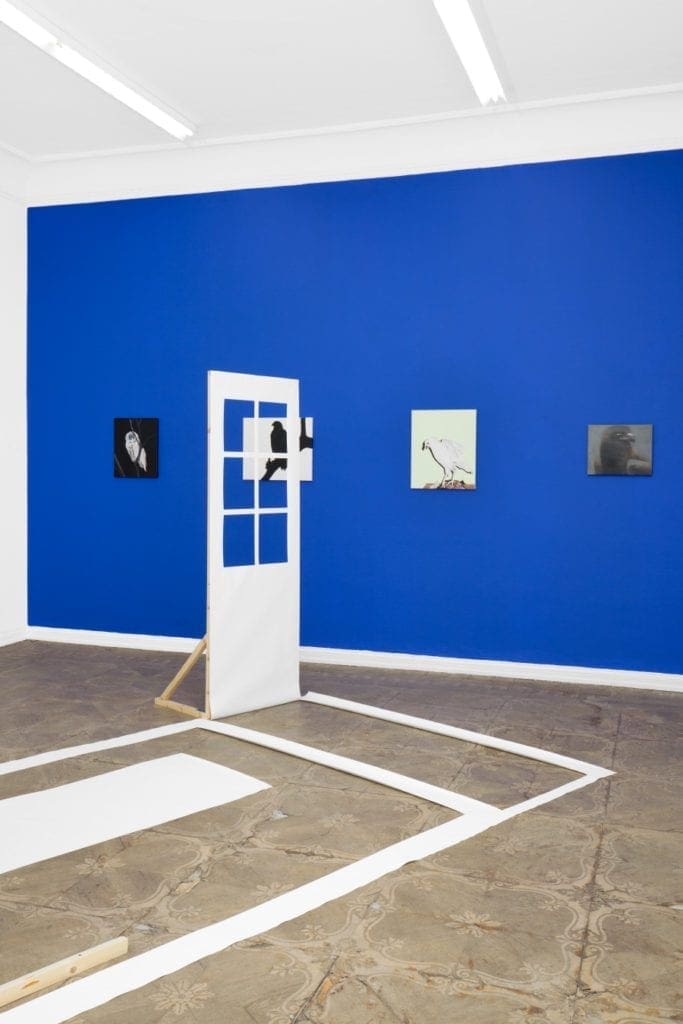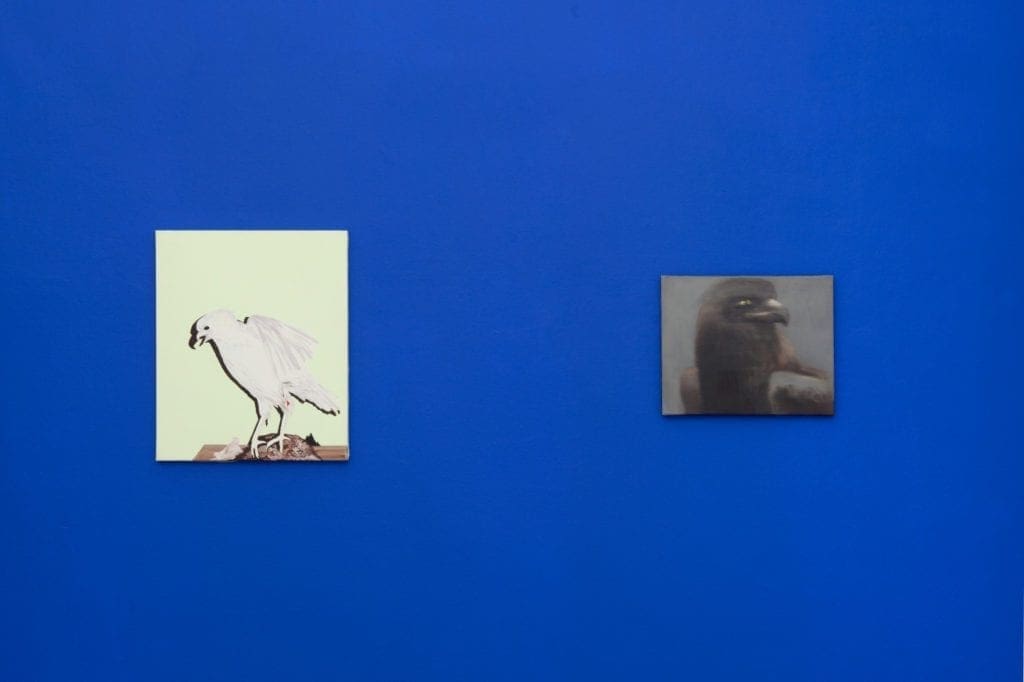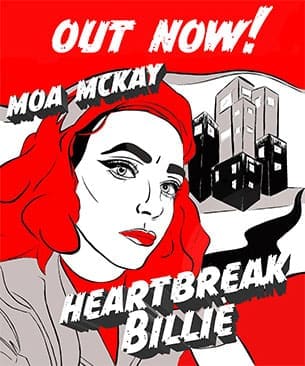Intrepid art reviewer Susie Kahlich, under the secret alter ego Artipoeus, checks out the best and most interesting exhibitions around Berlin each fortnight.
In Episode #32, Artipoeus visits Laetitia Gendre’s This Is Not Versailles at the Galerie Thomas Fischer in Berlin. Just beforehand, she takes a taxi across Paris only to miss her flight… “C’est pas possible!”…Read on…
The day I was leaving Paris for Berlin, I missed my flight at Airport Orly. There were no other flights available on the same airline that day, but I was eager to start my new life in Germany, and I have a good low-cost airfare app, so I found another flight leaving two hours later. Only… from airport Charles de Gaulle, clear on the other side of the City of Light. Which I guess would make it the Dark Side.
No matter, I had just enough time. I retraced my steps through the airport back to the trains that could get me across town in about an hour. And on my way, as I was passing by the main terminal’s giant floor to ceiling windows, I happened to glance outside. There, at the curb I spotted: a bright yellow taxi.
Yes, said my brain, a taxi is always a good idea.
“Can you get me to Airport Charles de Gaulle in time for an 11am flight?” I asked the driver. Of course he could. I jumped in, closed the door.
And then it started to rain.
As we pull onto the highway, the road is clear for about… 10 minutes. Then the traffic starts to get thick. My taxi driver glances at his dashboard clock, shakes his head. C’est pas possible, he said. But we keep going, by fits and starts, inch by inch. C’est pas possible. There’s an accident up ahead. C’est pas possible. The rain comes down harder. C’est pas possible. And he keeps up this litany, about every minute on the minute, for the next 10 kilometers: c’est pas possible c’est pas possible c’est pas possible.
After about 20 minutes of this, I did something that, in the 6 years I lived in Paris, I swore I would never do.
“Monsieur,” I said. “All the French ever say is ‘c’est pas possible c’est pas possible’. Mais moi, je me suis Americaine — pour nous, tous sont possible!!!!”
That’s right, I played the American card, which is obnoxious and tacky
…. But you know, I cracked: Monsieur, I’m American — for us, everything is possible!

Laetitia Gendre – This is not Versailles
It’s true, you know. In America, everything IS possible. We can be anything, do anything, build anything. We can turn dreams into reality, fiction into fact. And anyone can be President.
In 1977, a judge in Albuquerque, New Mexico was reading the funny pages one day and became fascinated with the latest installment of Spiderman. One of Spidey’s nemeses, Kingpin, had slapped an electronic bracelet on him to monitor his movements, telling the the webslinger, “now we’ll always know where you are, Spiderman!” Mwwaaahhhahhhaaahaaa.
While anyone else reading the paper that morning saw ridiculous science fiction, Judge Jack Love saw potential. A monitoring device, an electronic tether, would help prisoners reintegrate into their communities by allowing them to go to work, to be with their families, and reduce overcrowding and subhuman conditions in the prison system.
Who makes art about house arrest?
So while everyone else reading the funny pages that morning simply moved on to Hagar the Horrible and Blondie, Love started making phone calls. And the electronic monitoring device, the ankle bracelet, was born. All thanks to your friendly neighborhood Spiderman.
Laetitia Gendre’s installation This Is Not Versailles at the Galerie Thomas Fischer is all about the ankle bracelet, which as a concept alone is kind of great, because who makes art about house arrest?
When I first saw press for this exhibit, I thought it was referring to the palace at Versailles, which was a kind of prison in itself. A spacious, lush, prison, but still a prison – for the entire royal family and their entourage of courtiers and nobles, and for all the people who worked in the palace of Versailles as well.
Parquet and inlay curlicues swirl around the room, like a faded ballroom
But there is also a women’s prison in the town of Versailles, opened first in 1750 and still operating today. This is the Versailles Gendre is referring to, but the installation itself references both places — partly by happy accident: the gallery at Thomas Fischer is housed in a building from the late 18th or early 19th century. In the gallery, the original floor has been exposed. Parquet and inlay curlicues swirl around the room, like a faded ballroom, as if the brittle old wood has been saturated with grandeur and splendour to the point of… rot.

Laetitia Gendre – This is not Versailles
To walk into the Galerie Thomas Fischer is to walk straight into Laetitia Gendre’s installation itself — you are immediately immersed. In the first gallery, the walls are painted an intense, Yves Klein Blue. It’s such a deep and rich blue, like … like wow, while I was putting together this episode I realized how hard it is to describe this color. It’s not the blue of anyone’s eyes, or the sea or the sky. It’s the blue of the paper the Paris Metro system uses to fill the metro poster frames when there’s no advertising. It’s the blue of your computer screen when there are no desk savers. It’s a man-made blue, a blue intense and alive, it’s electric.
That wattage of blue electricity is in your way, stops you from actually getting there
There is also a video monitor in the first gallery, with a lovely video of ocean waves crashing and lapping against a rocky shore. But put on the headphones, and a blue rectangle grows on the screen although it doesn’t completely obliterate the calming ocean — the ocean teases around the edges, you can hear it in the background, so you know it’s there, you just can’t … reach it. That wattage of blue electricity is in your way, stops you from actually getting there.
On the headphones are the stories — and it’s important to listen to them, if only to put the rest of the installation in context. Stories of offenders who are under house arrest, equipped with the ankle monitor and how they’re coping with it.
The stories are simple, the crimes are the every day crimes of life
There is the single mother serving a sentence for assaulting her ex partner, her life shrunk to her tiny apartment thanks to the limited range of the monitor. There is the official who is now a prisoner, finding freedom in her garden at night where she paints nocturnal birds. There is the young woman who moved into her own apartment to serve her sentence in order to spare her parents the embarrassment of the ankle monitor, and finds a different kind of independence living on her own, even though restricted. There is the young man who chafes against the ankle bracelet so much he finally cuts it off with a pair of scissors from Ikea. The stories are simple, the crimes are the every day crimes of life, the crimes of living under the pressure of money and racism and the stresses of the modern world.
People crack sometimes, and all of these people have cracked a little bit
Each of them, at different stages of wearing the ankle bracelet, have adapted their lives around it — some grateful for the restriction, some pulling against it yearning to be free. Their stories intersect a little bit in that classic storytelling Indira’s web trope where the world isn’t so big after all and we’re all, somehow connected. They all bend and break to varying degrees, and they all want, as their first act of freedom from the ankle bracelet, to visit the sea.

Laetitia Gendre – This is not Versailles
So the installation brings the stories to life, or at least brings the settings to life. You insert yourself as the main character — you are the offender who paints nocturnal birds — there are your paintings on the wall. You are the offender who cut off your bracelet with a pair of Ikea scissors — there’s your journal entry. It’s like walking through a storybook, which warms my storytelling heart. But it’s also bringing the fiction to life, in much the same way Jack Love brought the ankle monitor to life out of that comic.
In the first gallery, an outline of a living space fills the room, the floor the faded floor of the palace of Versailles, all that rotting splendor, meaningless in this tiny, concept of a space. A door, a window, an outline all in white, 2 dimensional like theater sets, so you can see the pine frames they are suspended on, the way they are braced up against the floor. False fronts, in a way, as flimsy but as real as the GPS tether of the ankle monitor.
When you disbelieve the messenger, people get hurt. But when you believe everything, everyone gets arrested
Gendre’s conceptual rooms also remind me of the minimal sets from the Lars von Triers film, Dogville, another story of a prisoner, although a voluntary one.
There have been plenty of movies made about house arrest, of course the most famous being Alfred Hitchcock’s 1954 thriller Rear Window, with Jimmy Stewart imprisoned at home by his broken leg, with nothing better to do than spy on his neighbors and witness a murder. Or the updated version starring Shia LaBeouf, 2007’s Disturbia, about a teenager sentenced to house arrest who, restricted by his ankle monitor, has nothing better to do than spy on his neighbors, and discovers one of them is a serial killer.
But these movies were less about physical imprisonment than cautionary tales based on the fable The Boy Who Cried Wolf. When you disbelieve the messenger, people get hurt. But when you believe everything, everyone gets arrested — in Revolutionary France, it was called the Terroir; in 1950s America, it was called McCarthyism. Fascist regimes are the best places to cry wolf. Everyone’s on a tether; your neighbors are your tracking device.
These days, everything has become a tracking device: CCTV cameras, our smart phones, our laptops, even our TVs.
Electronics corporation Samsung just released a statement warning its customers to not hold private or intimate conversations in front of their new Samsung TVs, even when turned off. Which is bizarre in itself since they’re the ones that built the damn things — why not just NOT include the technology? Why is it so integrated into everything else that we can’t have one without the other, where instead of technology adapting to our lives, we are now adapting to it.
It’s straight out of George Orwell’s 1984
Which is how ankle monitoring devices work. The wearer adapts to the technology. Go outside the prescribed geographical area, the alarm goes off. Get back after curfew, the alarm goes off. Suddenly your world has been shrunk to these places and these times. Prison without the walls and bad company.
They don’t live off the grid so much as on the edges of it, becoming prisoners of their own conspiracy theories
But what is prison for? Jail — the purpose of prison — is to remove dangerous and disruptive elements from society, so that society can continue to function productively and peacefully. Why should an entire society adapt around one person who doesn’t get it? It’s to force compliance.
And if you don’t want to comply, you go underground, like people who don’t want to be tracked by phones and TV’s and computers. They don’t use smart phones, they re-route their IP addresses and spend minimal time on the internet. They don’t live off the grid so much as on the edges of it, becoming prisoners of their own conspiracy theories, never leaving their own plot of land, trapped at home and monitoring the monitors.
It gives me a feeling of haste and desperation or even despair, of giving up
The middle room of the gallery space is taken up by a huge print on vinyl of the suburban home — or view from the suburban home of one of the offenders. It stretches across the room and while the image printed on the vinyl canvas is in black and white, slightly blurred as the leaves from trees stirred in a breeze you can almost feel, the buildings quiet and white and familiar, it’s less a dreamscape than a soothing photo of someplace familiar and comforting.

Laetitia Gendre – This is not Versailles
Step through it and tacked along the wall, in the way children’s drawings are tacked up in schoolrooms, are pages of paintings and drawings illustrating the offenders’ stories, ranging from literal to representational. I have to confess, even though I see the reason for displaying the work in this way, it gets under my skin. I hate stuff pinned to the wall, instead of hung in a frame, or displayed in some way that is more solid, more permanent. These pages blow about in the slightest breeze of someone walking by, the unpinned bottoms of the paper curling up, away from the wall. It gives me a feeling of haste and desperation or even despair, of giving up, of “this will do”. It’s as temporary but as solid as the ankle bracelet itself, and like the ankle bracelet, it chafes.
In the final room, the space is completely white…and bare. The only thing in this space, besides a door set into the wall — logic says it leads to the offices of the gallery, but my imagination says it leads to freedom. Through secret passages. And possibly tunnels through a complex sewer system, because my imagination is run by Victor Hugo. The only other thing in here are copies of the Albuquerque newspaper featuring the Spiderman comic that inspired Jack Love, and front page featuring Love wearing the prototype ankle bracelet himself.
The artist has hand-copied the funny pages and the front page, including hand-lettering the article. Just in the love for this type of art, I love it, and I love that she has left everything but the points of focus fuzzy and almost faded out — on the funny pages, only the Spiderman comic is clear. On the front page, only the headline article and photo featuring Jack Love. It’s all that’s important anyway, at least for this installation. The rest of the news on those days is irrelevant… we could almost say, in relation to this particular reality, fake.
With these two works, Gendre has effectively reversed everything: fictionalized the newspaper by making a copy of it, reproducing only the parts she finds relevant and smudging out the rest — kind of like how we tend to perceive reality anyway. And by the act of copying it, she simultaneously makes it art as well as challenges the original, sending the fact back into fiction from whence it came.
After I lost it with my taxi driver, he stopped repeating c’est pas possible… out loud. But in true French fashion, he simply continued to mutter c’est pas possible under his breath for the rest of the drive to the airport. Vivre la resistance!
It was a prison for the nobility
The palace of Versailles is also a fiction brought to life, like the fake farm where Marie Antoinette could play milkmaid. But this fiction was also a prison — the palace itself a symbol of absolute monarchy by that time of Marie Antoinette the royalty were so hated they couldn’t leave Versailles. And it was a prison for the nobility, who spent months at a time at the palace on the fiction of an invitation, when in reality they were required to spend time in that beautiful white collar prison on pain of being stripped of their rank and lands.
The installation This Is Not Versailles is ultimately about about bringing fiction to life
And when the fiction of absolute monarchy became saturated to the point of rot, the peasants in their rage were finally subdued with a fiction as well, since the Revolution didn’t really change anything at all, except create a middle class, the bourgeoisie and give every man the illusion that he had the same droits de cuissage as landed gentry… but the poor still eat the same crappy bread, still live outside the Peripherique of Paris, still riot and burn things and even, in their frustration, kill. Because in the end, the fiction never replaces the very real facts and pressures, the prison, of poverty, of racism, of the stresses of modern life.
The installation This Is Not Versailles is ultimately about about bringing fiction to life. Seeing the ankle monitor in a Spiderman comic and making it a reality. But why is it only the terrible things that are being brought into reality? Why do we have no control over the fiction, if we create it ourselves? Why is it always a Spiderman comic, Orwell’s 1984, The Matrix? Why never the beautiful things?
This Is Not Versailles is on view until April 13th at Galerie Thomas Fischer, located at Potsdamer Straße 77-87, Haus H, in Berlin.
This is a guest post by Artipeous – check out a load more wonderful podcasts and articles on art in Paris and Berlin by the irrepressible Susie Kahlich on her homepage


